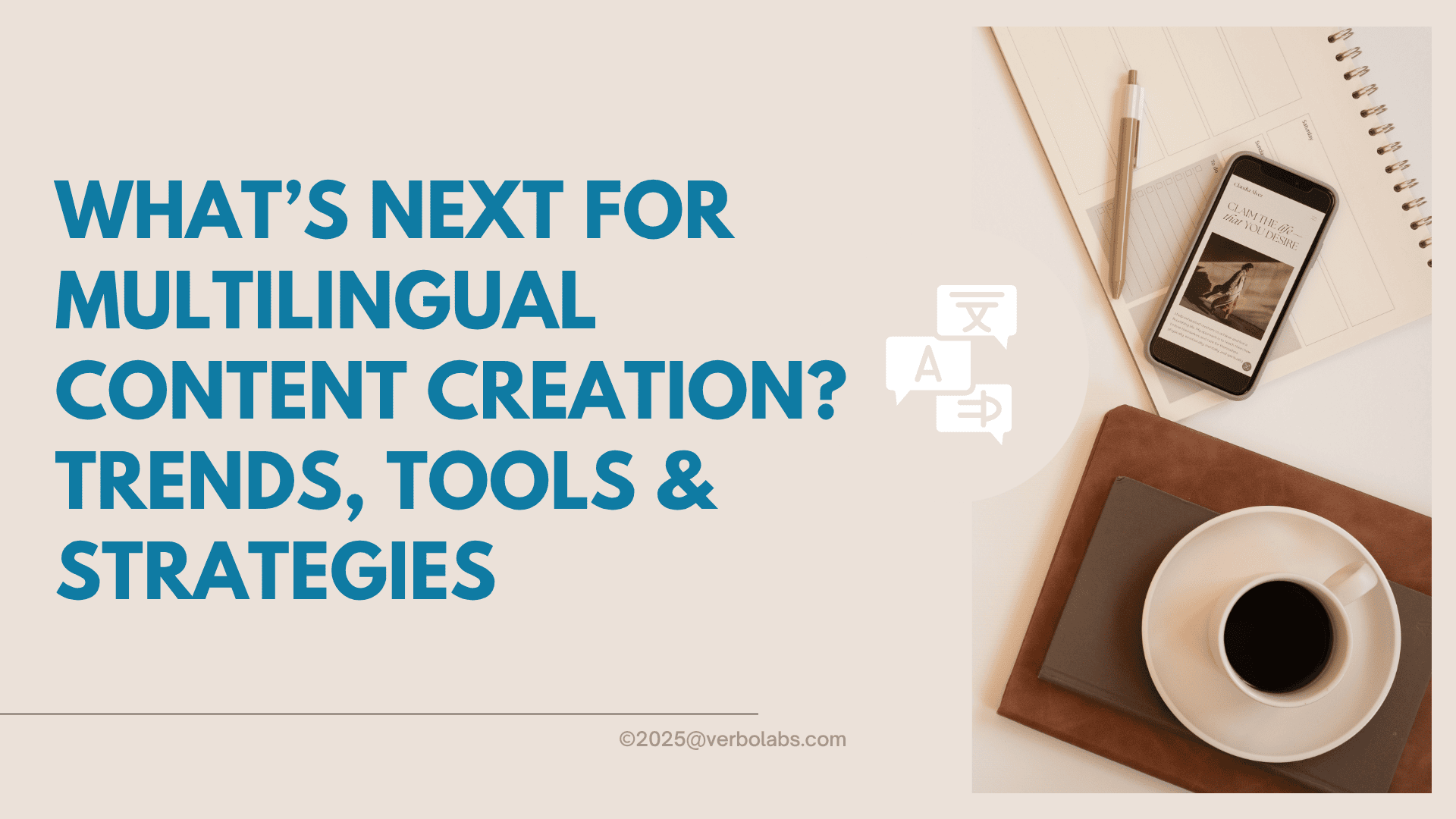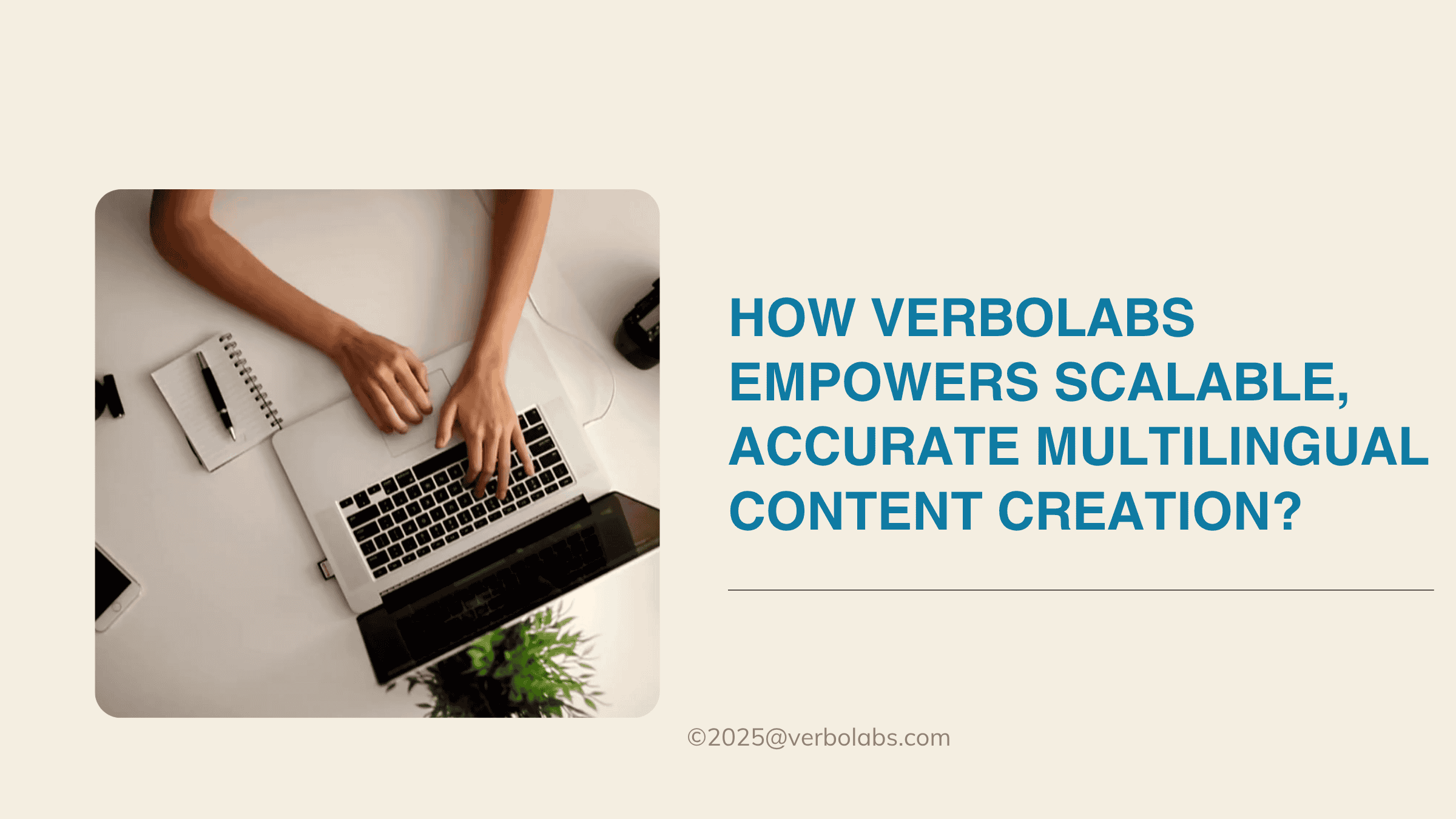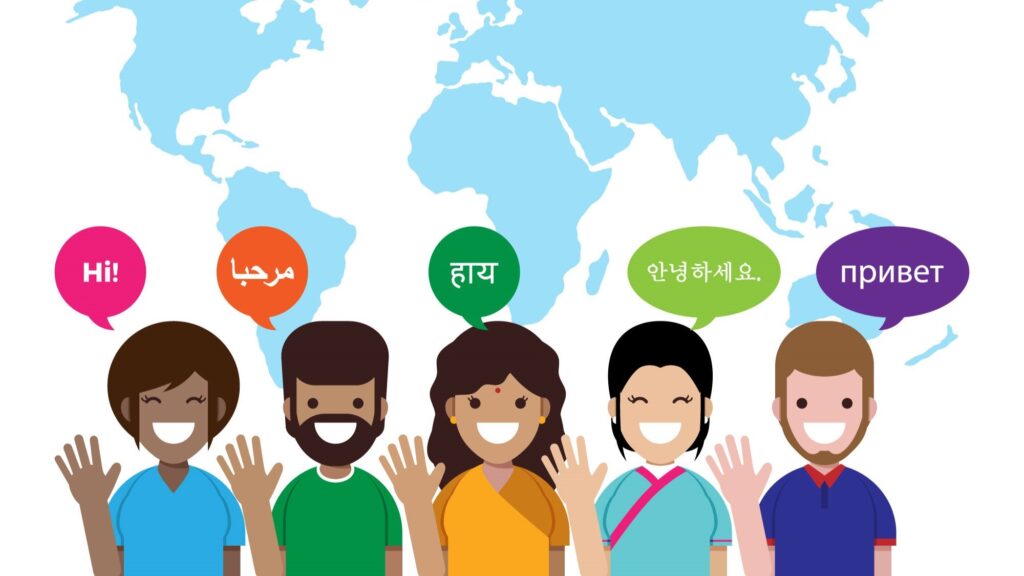
In a world where “content is king,” multilingual content is now the global kingmaker. It is a type of content that is available in multiple languages and involves creating or adapting content in different languages to reach a broader audience.
According to CSA research, over 60% of internet users prefer content in their native language, even when they speak English well. That’s why, to cater to diverse linguistic and cultural preferences, multilingual content is supported by translation & localization services for many purposes like document translation, dubbing, AI-voiceover, etc.
The approach of multilingual content goes beyond simple translation, often involving localization, where content is adapted as per specific cultural contexts. Here are the details to identify trends, tools, and strategies for multilingual content creation in 2025:
Why Multilingual Content Matters More Than Ever?
Content in different languages creates understanding, accessibility, and relevance with the natives, as per their cultural and language preferences.
Here’s how multilingual content is an essential source and matters more than ever:
1. Access to Global Markets
- For entry in global markets, language barriers can only be covered through multilingual content.
- Some of the common markets for expansion are Asia, LATAM, MENA, and Europe.
2. Personalized User Experiences
- Native language brings the bonus points with the personalized user experience to establish a higher emotional connection with the audience.
3. SEO Visibility in Different Regions
- Multilingual content drives SEO and organic growth into the different locations, building visibility in the virtual world.
4. Brand Trust and Professionalism
- Almost 40% of users won’t purchase or recommend from a site not in their native language. Therefore, multilingual contents are preferred.
The Evolution of Multilingual Content Creation
Multilingual content creation has undergone a remarkable transformation over the years. What once meant translating text word-for-word has now become a dynamic process of adapting messages across languages, cultures, and formats.
In the early stages, businesses focused mainly on direct translation to make their content accessible. While this served the purpose of reaching new markets, it often missed cultural nuances, resulting in content that felt disconnected or generic. As brands realized the importance of building authentic relationships, the focus shifted toward localization—ensuring that tone, style, humor, and imagery resonated with local audiences.
With the growth of digital platforms, content evolved beyond written text. Companies began investing in multimedia localization, including subtitling, dubbing, and voiceovers, to provide seamless experiences in videos, e-learning platforms, and social media campaigns. This broadened the scope of multilingual content from simple accessibility to immersive storytelling.
The present era has introduced AI-powered content creation and translation tools, making multilingual strategies faster and more scalable. Machine learning enables real-time translations and automated workflows, while human expertise ensures quality, cultural accuracy, and brand consistency. The result is a hybrid model that blends efficiency with emotional impact—essential for global growth.
In essence, multilingual content creation has evolved:
- From basic translations to culturally aware localization
- From text-only formats to voice, video, and interactive content
- From manual processes to AI + human hybrid workflows
This journey reflects how businesses have adapted to technological advancements and rising user expectations. Today, multilingual content is no longer just a tool to overcome language barriers—it is a strategic asset for global connection and brand trust.
What’s Next? Key Trends to Watch in 2025
After hearing all about multilingual content, we need to identify its positive aspects.
Check out the key trends to watch in 2025, relevant to website localization, app translation, and culturally friendly content:
1. AI-Powered Content Creation & Translation
With AI-powered content, faster drafts can be formed with auto-format, but so far, there’s still a need for Human QA for editing and making translation user-friendly.
2. Scalable CMS & TMS Integrations
With multilingual content provided by translation and localization services, work pipelines are automated via APIs.
3. Voice & Video Localization
Native voiceover artists have been resourceful for human dubbing and voiceovers, while AI has led the growth of subtitles with graphic features.
4. Multilingual SEO Optimization
To increase organic reach and target a specific niche, region-specific keyword research, meta tagging, and meta-descriptions are becoming more involved in multilingual content.
5. Inclusive Cultural Localization
Cultural localization is beyond translation because of the expressions, tone, and adaptability included in the humor and visuals. Therefore, this trend of localizing websites and apps is going to be more desirable in the future.
Challenges in Multilingual Content Creation
While being one of the most exceptional ways to excel in Social Media and the content industry, Multilingual content creation has some significant challenges to look after and overcome. Here are a few of them listed below:
- Inconsistency across languages
- Quality assurance & brand voice retention
- Lack of cultural context
- Time and cost for large content volumes
- There is a shortage of skilled human workforce in the QA of the AI interpretation and translation.
How VerboLabs Empowers Scalable, Accurate Multilingual Content Creation?

In building a strong foundation and accuracy in multilingual content creation, VerboLabs has been a consistent translation and localization service provider for its clients.
Below are some of the services that you get if you hire VerboLabs as the official translation company for your projects:
1. Translation & Localization Services
- Human + AI workflows for speed and perfection are built with solid formats.
- Industry-specific content expertise (tech, legal, education, gaming, etc.)
2. Website Localization Services
- Complete adaptation of websites and applications for different market niches.
- SEO optimization with content adaptation while looking for cultural preferences.
3. Multimedia & Voice Content Localization
- There is specific script translation, dubbing, and voiceovers done in 120+ languages.
4. E-Learning & App Localization
- The content provided by VerboLabs is adaptable across LMS platforms and mobile apps.
- Also ensures the SCORM/xAPI compatibility.
5. Content QA & Glossary Management
- Considering a consistent tone and terminology, we ensure everything is on board.
- Centralized glossaries and style guides per industrial demand.
How VerboLabs Helped a Global EdTech Platform Scale in 7 Languages?
For clearing more groundwork, here’s the short recap that gives an insight into how VerboLabs helped a global EdTech platform to scale in 7 different languages in one shot.
- Problem: The EdTech company required rapid content expansion in APAC & LATAM to reach their target audience through the application and website.
- Solution: A sure-shot way was multilingual blogs & video content with regional SEO to save time, effort, and ensure competitive costing.
- Result: Within a bridge gap of a couple of months, multilingual content provided by VerboLabs got 3x traffic growth, 40% lower bounce rate in localized regions.
Best Practices for Future-Ready Multilingual Content Strategy
Suppose your business is exploring the best practices to follow to build an empire that is significantly more advanced and future-ready. Then, there’s a need to give a kick start to multilingual content strategy today with these ways:
- Start with user analytics by prioritizing regions/languages to understand user behavior and identify changes in event patterns.
- Using hybrid workflows (AI + human review) is the best approach to take, as this enhances the work without compromising on quality checks.
- Aligning brand voice and vocabulary with cultural tone is one of the most crucial factors to consider in creating content in multiple languages.
- Build a multilingual SEO strategy early to avoid any adversity.
- Take care of regular updates & maintenance for a strong line of localization.
How to Get Started with VerboLabs?
Instead of just figuring out, it’s better to create plans as a priority. With the services of VerboLabs, you can benefit the most by getting started with specific points:
- Free localization and translation strategy session via call or in-person meeting.
- Seamless onboarding for websites, blogs, and other media projects.
- Scalable solutions for startups, SMBs, and enterprises.
- Ongoing support, social media, and SEO optimization.
The Future is Multilingual—Are You Ready?
Being ready on one’s toes for accepting and embracing the change is what businesses are meant for. And, in the content localization, Multilingual content is the future. Connecting with the audience in their native language isn’t going to be an option; it’s a choice to make.
For global growth, let VerboLabs help you reform and interpret your content strategies for every market that matters.

Transform your global reach with VerboLabs’ expert multilingual content solutions—start your strategy session today!



